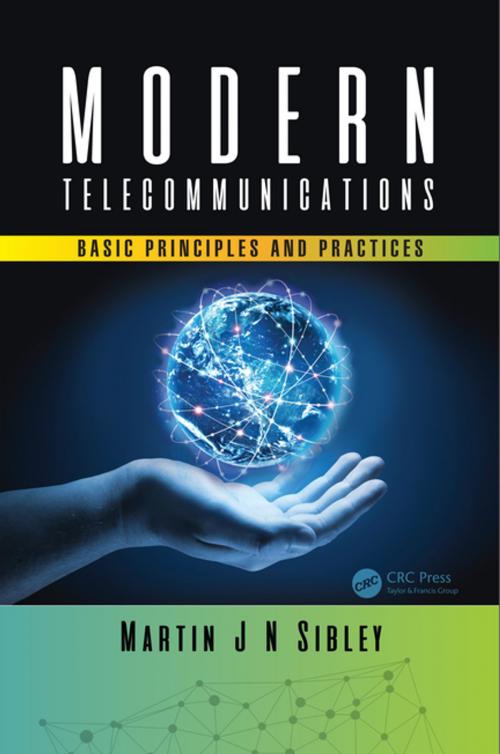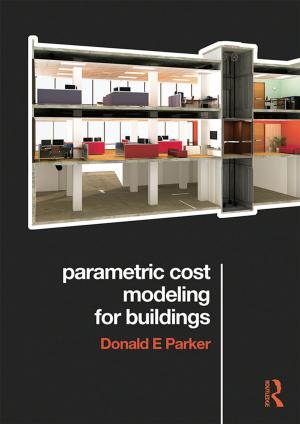Modern Telecommunications
Basic Principles and Practices
Nonfiction, Science & Nature, Technology, Telecommunications, Engineering| Author: | Martin J N Sibley | ISBN: | 9781351263580 |
| Publisher: | CRC Press | Publication: | April 17, 2018 |
| Imprint: | CRC Press | Language: | English |
| Author: | Martin J N Sibley |
| ISBN: | 9781351263580 |
| Publisher: | CRC Press |
| Publication: | April 17, 2018 |
| Imprint: | CRC Press |
| Language: | English |
Telecommunications is fundamental to modern society, with nearly everyone on the planet having access to a mobile phone, Wi-Fi, or satellite and terrestrial broadcast systems. This book is a concise analysis of both the basics of telecommunications as well as numerous advanced systems. It begins with a discussion of why we perform modulation of a carrier signal, continuing with a study of noise affecting all telecommunications links, be they digital or analogue in form. Digital communications techniques are examined in Modern Telecommunications: Basic Principles and Practices. Such an examination is crucial since radio, television, and satellite broadcasts are transmitted using a digital format. Analogue modulations are also considered. The logic behind such an investigation is because, whereas most broadcast systems are moving towards digital transmission, analogue techniques are still very much prevalent (most notably with AM and FM broadcasts). A topic that is often neglected in text books on telecommunications but is at the forefront of Modern Telecommunications concerns transmission lines. This is an important area of work since every length of coaxial cable used to convey signals from an antenna to a receiver is a transmission line. It is vitally important that a transmission line linking a transmitter to the antenna is matched and this topic is explored in great detail in several chapters dealing with Smith charts.
- Explains the background behind digital TV and radio as well as the legacy of analogue transmissions.
- Presents materials in a way that minimizes mathematics, making the topic more approachable and interesting to users.
- Provides a look at familiar systems that readers encounter in their everyday life (including mobile phones, Wi-Fi hotspots, satellites, digital TV, etc.).
- Demonstrates techniques and topics through end-of-chapter problems.
- Presents materials in an introductory form, making the information easily understandable and suitable for an undergraduate option course.
Telecommunications is fundamental to modern society, with nearly everyone on the planet having access to a mobile phone, Wi-Fi, or satellite and terrestrial broadcast systems. This book is a concise analysis of both the basics of telecommunications as well as numerous advanced systems. It begins with a discussion of why we perform modulation of a carrier signal, continuing with a study of noise affecting all telecommunications links, be they digital or analogue in form. Digital communications techniques are examined in Modern Telecommunications: Basic Principles and Practices. Such an examination is crucial since radio, television, and satellite broadcasts are transmitted using a digital format. Analogue modulations are also considered. The logic behind such an investigation is because, whereas most broadcast systems are moving towards digital transmission, analogue techniques are still very much prevalent (most notably with AM and FM broadcasts). A topic that is often neglected in text books on telecommunications but is at the forefront of Modern Telecommunications concerns transmission lines. This is an important area of work since every length of coaxial cable used to convey signals from an antenna to a receiver is a transmission line. It is vitally important that a transmission line linking a transmitter to the antenna is matched and this topic is explored in great detail in several chapters dealing with Smith charts.
- Explains the background behind digital TV and radio as well as the legacy of analogue transmissions.
- Presents materials in a way that minimizes mathematics, making the topic more approachable and interesting to users.
- Provides a look at familiar systems that readers encounter in their everyday life (including mobile phones, Wi-Fi hotspots, satellites, digital TV, etc.).
- Demonstrates techniques and topics through end-of-chapter problems.
- Presents materials in an introductory form, making the information easily understandable and suitable for an undergraduate option course.















